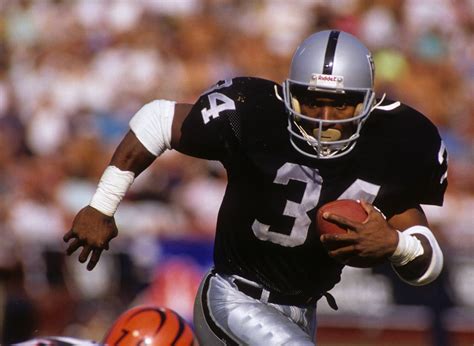
Julius Erving, “Dr. J,” unequivocally believes a hypothetical matchup between his 1980s Philadelphia 76ers and any modern NBA team would result in a victory for his squad. Erving’s confidence stems from the physicality, versatility, and mental toughness of his era, asserting that the different rules and styles of play favored a more rugged and defensive-oriented approach.
Julius Erving, a basketball legend known as “Dr. J,” recently ignited a debate among basketball fans by declaring that his 1980s Philadelphia 76ers would defeat any team from today’s NBA. This bold assertion isn’t merely nostalgic reminiscing; Erving presents a well-reasoned argument based on the differing styles of play, physicality, and rules prevalent in the 1980s compared to the modern NBA.
“I think we’d beat anybody,” Erving stated emphatically. His confidence isn’t just bravado; it’s rooted in his belief that the 76ers, with their blend of talent, toughness, and basketball IQ, were uniquely equipped to dominate any era.
The 1980s 76ers were a force to be reckoned with. Led by Erving, Moses Malone, and Maurice Cheeks, the team embodied a style of basketball characterized by aggressive defense, physical play, and a commitment to rebounding. They famously captured the NBA championship in 1983, sweeping the Los Angeles Lakers in a dominant display of teamwork and skill.
Erving emphasizes the physicality of the 1980s game as a crucial factor. “The game was a lot more physical,” he noted. “You could hand-check, you could body-up, and the floor wasn’t as spread.” These differences, according to Erving, would significantly impact the modern game’s flow, disrupting the offensive rhythm that many contemporary teams rely on. The ability to hand-check, a defensive tactic now largely restricted, allowed defenders to maintain constant contact with offensive players, impeding their movement and driving ability. Similarly, the allowance of more physical play under the basket made scoring inside more challenging, rewarding teams with strong rebounding and interior defense.
Another aspect Erving highlights is the mentality of players during his time. The 1980s NBA was renowned for its intense rivalries and the fierce competitiveness of its stars. Players like Erving, Larry Bird, and Magic Johnson approached each game with a relentless determination to win, fostering a culture of toughness and mental fortitude. This mentality, Erving suggests, would be a significant advantage against modern teams, where the emphasis can sometimes lean more towards individual statistics and less towards collective grit.
“Guys were playing for keeps every night,” Erving recalls. “There was a different level of intensity.” This higher level of intensity, combined with the more physical style of play, created a basketball environment that rewarded toughness and resilience – qualities that Erving believes were hallmarks of his 76ers team.
The difference in rules also plays a pivotal role in Erving’s assessment. The current NBA rules, designed to promote offensive flow and scoring, limit defensive contact and favor perimeter-oriented play. The stricter enforcement of hand-checking rules and the allowance of zone defenses have transformed the game, creating more space for offensive players to operate. Erving argues that these rule changes would hinder modern teams against the 1980s 76ers, who excelled in a more constrained and physical environment.
Furthermore, Erving acknowledges that the game has evolved significantly in terms of athleticism and skill. Modern players are often lauded for their superior shooting ability, ball-handling skills, and overall athleticism. However, he counters that the 76ers possessed a unique blend of athleticism and fundamental skills that would translate well into any era.
“We had guys who could run, jump, and shoot,” Erving explains. “But we also knew how to play the game.” This combination of physical gifts and basketball IQ, according to Erving, is what made the 76ers such a formidable opponent. Moses Malone’s rebounding prowess, Maurice Cheeks’s defensive tenacity, and Erving’s own unparalleled athleticism and scoring ability created a balanced and versatile team capable of adapting to any challenge.
Erving isn’t alone in his assessment. Many basketball analysts and former players have debated the merits of different eras, with some arguing that the increased athleticism and skill of modern players would be too much for teams from the past to handle. However, others contend that the physicality and mental toughness of past eras would give those teams an edge in a hypothetical matchup.
The debate over which era produced the best basketball teams is a timeless one, fueled by nostalgia, personal biases, and a genuine appreciation for the evolution of the game. While it’s impossible to definitively answer the question, Erving’s comments provide valuable insight into the contrasting styles of play and the unique qualities that made the 1980s 76ers a championship-caliber team.
Ultimately, Erving’s statement serves as a reminder of the different eras in basketball history and the unique characteristics that defined each one. Whether his 76ers team could truly defeat any modern NBA team remains a matter of speculation, but his confidence in his team’s ability is a testament to the enduring legacy of one of basketball’s greatest players and one of its most iconic teams. The discussion, regardless of its resolution, underscores the ongoing fascination with comparing eras and the enduring appeal of hypothetical matchups that pit legends of the past against the stars of today.
The hypothetical matchup also brings to light the evolution of player specialization. In the 1980s, while specialization existed, players often needed to be more versatile, contributing in multiple facets of the game. Today, specialization is highly emphasized, with players often focusing on specific skills such as three-point shooting, perimeter defense, or post scoring. The 76ers’ roster had players who could score, rebound, defend, and facilitate, providing a more balanced attack.
Erving’s comments also touch on the role of coaching. The 1980s were known for strong coaching personalities and strategic approaches that emphasized team play and defensive schemes. Coaches like Billy Cunningham of the 76ers were masters of in-game adjustments and player management. While modern coaching is undoubtedly sophisticated, the emphasis on player empowerment and offensive freedom sometimes contrasts with the more structured and disciplined approaches of the past.
The discussion naturally extends to the evaluation of talent across generations. While advanced statistics provide more detailed analysis than ever before, comparing players from different eras remains subjective. Factors such as rule changes, league expansion, and variations in playing styles complicate direct comparisons. Erving’s viewpoint underscores the importance of considering the context in which players performed, recognizing that success is often a product of the environment and the challenges faced.
Moreover, the debate reflects the shifting priorities within the NBA. While winning remains the ultimate goal, the modern NBA also places a significant emphasis on entertainment value and individual player branding. The emphasis on highlight-reel plays, social media presence, and player endorsements has transformed the league into a global entertainment spectacle. In contrast, the 1980s NBA had a grittier, more blue-collar feel, where hard work and dedication were highly valued.
Erving’s argument also brings attention to the potential impact of adapting to different rule sets. Modern players, accustomed to the current rules, might struggle with the increased physicality and limited defensive restrictions of the 1980s. Conversely, players from the 1980s would need to adjust to the faster pace and greater emphasis on three-point shooting in the modern game. The ability to adapt to these changes would be a crucial factor in determining the outcome of a hypothetical matchup.
Furthermore, the debate highlights the importance of team chemistry and leadership. The 1980s 76ers were known for their strong team chemistry, with players who genuinely enjoyed playing together and supported each other on and off the court. This camaraderie translated into success on the court, as players were willing to sacrifice individual accolades for the good of the team. Leadership, both on and off the court, was also a key component of their success, with Erving and Malone providing guidance and setting the tone for the rest of the team.
Erving’s remarks prompt a broader reflection on the legacy of the 1980s NBA. The decade is often remembered as a golden era for basketball, characterized by iconic rivalries, unforgettable moments, and a collection of legendary players who transcended the sport. The battles between the Lakers and Celtics, the emergence of Michael Jordan, and the dominance of teams like the 76ers helped to shape the modern NBA into the global phenomenon it is today.
The debate surrounding Erving’s comments is likely to continue for years to come, fueled by the passion and nostalgia of basketball fans. While it’s impossible to definitively prove which era produced the best teams, the discussion serves as a valuable reminder of the rich history of the NBA and the enduring legacy of the players and teams who have shaped the game. The very act of considering such matchups encourages a deeper appreciation for the evolution of basketball and the diverse talents that have graced the court over the decades.
The conversation initiated by Erving underscores the enduring appeal of sports debates that transcend time. Fans often engage in hypothetical scenarios that pit different eras against each other, comparing athletes and teams across generations. These debates are driven by a combination of nostalgia, personal preferences, and a genuine love for the game. They also serve as a way to celebrate the accomplishments of past legends and appreciate the evolution of sports over time.
In the end, Erving’s claim is more than just a boast; it’s a statement about the values he believes are essential to success in basketball: toughness, teamwork, and a relentless competitive spirit. These qualities, he suggests, are timeless and would allow his 76ers team to compete and succeed in any era. Whether one agrees with his assessment or not, Erving’s comments have undoubtedly sparked a fascinating debate and provided a fresh perspective on the evolution of the game.
The argument also indirectly addresses the impact of free agency and player movement on team dynamics. In the 1980s, while free agency existed, players often stayed with their teams for longer periods, fostering greater stability and team chemistry. Today, player movement is much more frequent, with players often changing teams in search of better opportunities or higher salaries. This increased mobility can make it more challenging to build long-term team chemistry and establish a consistent identity.
Furthermore, the debate highlights the differences in media coverage and fan engagement between eras. In the 1980s, media coverage was primarily limited to television, radio, and newspapers. Today, the internet and social media have transformed the way fans consume sports, providing instant access to highlights, analysis, and player interactions. This increased level of engagement has both positive and negative consequences, creating more opportunities for fans to connect with their favorite teams and players but also increasing the pressure on athletes to perform and maintain a public image.
Erving’s stance invites a deeper look into the role of individual skills versus team strategy. Modern basketball often emphasizes individual brilliance, with players showcasing exceptional dribbling, shooting, and scoring abilities. However, the 1980s game placed a greater emphasis on team strategy, with coaches designing intricate offensive and defensive schemes that relied on precise execution and player cooperation. The 76ers’ success was built on a combination of individual talent and a well-defined team strategy, making them a formidable opponent.
The comparison between eras also touches on the evolution of athletic training and player development. Modern athletes benefit from advanced training techniques, sports science, and nutrition programs that enhance their physical performance and extend their careers. While players in the 1980s also trained hard, they did not have access to the same level of scientific support. This difference in training methods could be a significant factor in a hypothetical matchup between eras.
Finally, Erving’s statement underscores the subjective nature of sports debates. There is no definitive way to prove which era produced the best basketball teams, as different people will have different opinions based on their personal experiences and preferences. The beauty of sports lies in its ability to generate passionate discussions and create lasting memories, regardless of whether those memories are based on fact or opinion. Erving’s comments have undoubtedly contributed to this ongoing conversation, ensuring that the legacy of the 1980s 76ers will continue to be debated and celebrated for years to come.
Frequently Asked Questions (FAQ)
-
Why does Julius Erving believe his 1980s 76ers would beat any modern NBA team?
- Julius Erving believes his 1980s Philadelphia 76ers would defeat any modern NBA team due to the physicality, mental toughness, and different rules that favored a more rugged and defensive-oriented approach. He emphasized the ability to hand-check and body-up, stating, “The game was a lot more physical… You could hand-check, you could body-up, and the floor wasn’t as spread.” He also believes the intense competitiveness and determination of players in the 1980s would give them an edge. “Guys were playing for keeps every night. There was a different level of intensity.”
-
What were some of the key differences in rules and playing styles between the 1980s NBA and the modern NBA?
- Key differences include the allowance of hand-checking in the 1980s, which is now restricted, and the greater emphasis on physical play. The modern NBA rules promote offensive flow and scoring, limit defensive contact, and favor perimeter-oriented play. The stricter enforcement of hand-checking rules and the allowance of zone defenses have transformed the game, creating more space for offensive players to operate. The 1980s also emphasized rebounding and interior defense more heavily.
-
Who were the key players on the 1980s Philadelphia 76ers team that Erving is referring to?
- The key players on the 1980s Philadelphia 76ers included Julius Erving (Dr. J), Moses Malone, and Maurice Cheeks. This trio formed the core of the team that won the NBA championship in 1983. They were known for their combination of athleticism, skill, and toughness.
-
How has the NBA evolved in terms of player athleticism and skill compared to the 1980s?
- The NBA has evolved significantly in terms of athleticism and skill. Modern players are often lauded for their superior shooting ability, ball-handling skills, and overall athleticism, thanks to advanced training techniques, sports science, and nutrition programs. However, Erving counters that the 76ers possessed a unique blend of athleticism and fundamental skills that would translate well into any era. He explains, “We had guys who could run, jump, and shoot, but we also knew how to play the game.”
-
What is the broader significance of Erving’s comments about his 76ers team?
- The broader significance of Erving’s comments lies in the timeless debate about which era produced the best basketball teams. His comments provide valuable insight into the contrasting styles of play and the unique qualities that made the 1980s 76ers a championship-caliber team. It sparks discussions about the evolution of the game, the importance of physicality and mental toughness, and the enduring legacy of iconic players and teams. It also highlights the subjective nature of sports debates and the enduring appeal of hypothetical matchups.
-
How did the physicality of the 1980s NBA influence the game compared to today’s NBA?
- The increased physicality of the 1980s NBA significantly influenced the game by allowing defenders to maintain constant contact with offensive players, impeding their movement. This meant that scoring inside was more challenging, and it rewarded teams with strong rebounding and interior defense. The ability to hand-check and body-up, as emphasized by Erving, disrupted the offensive rhythm that many contemporary teams rely on.
-
What role did coaching play in the 1980s NBA, and how does it compare to modern coaching styles?
- Coaching in the 1980s was characterized by strong personalities and strategic approaches that emphasized team play and defensive schemes. Coaches like Billy Cunningham of the 76ers were masters of in-game adjustments and player management. While modern coaching is undoubtedly sophisticated, the emphasis on player empowerment and offensive freedom sometimes contrasts with the more structured and disciplined approaches of the past.
-
How has the emphasis on individual skills versus team strategy shifted between the 1980s and the modern NBA?
- Modern basketball often emphasizes individual brilliance, with players showcasing exceptional dribbling, shooting, and scoring abilities. However, the 1980s game placed a greater emphasis on team strategy, with coaches designing intricate offensive and defensive schemes that relied on precise execution and player cooperation. The 76ers’ success was built on a combination of individual talent and a well-defined team strategy, making them a formidable opponent.
-
In what ways have advancements in athletic training and player development impacted the game since the 1980s?
- Modern athletes benefit from advanced training techniques, sports science, and nutrition programs that enhance their physical performance and extend their careers. These resources were not as readily available or as sophisticated in the 1980s. This difference in training methods could be a significant factor in a hypothetical matchup between eras, potentially giving modern players a physical advantage in terms of endurance and recovery.
-
How has the role of media coverage and fan engagement changed the NBA between the 1980s and today?
- In the 1980s, media coverage was primarily limited to television, radio, and newspapers. Today, the internet and social media have transformed the way fans consume sports, providing instant access to highlights, analysis, and player interactions. This increased level of engagement has both positive and negative consequences, creating more opportunities for fans to connect with their favorite teams and players but also increasing the pressure on athletes to perform and maintain a public image. The intense scrutiny and constant analysis can affect player performance and team dynamics in ways that were less prevalent in the 1980s.









